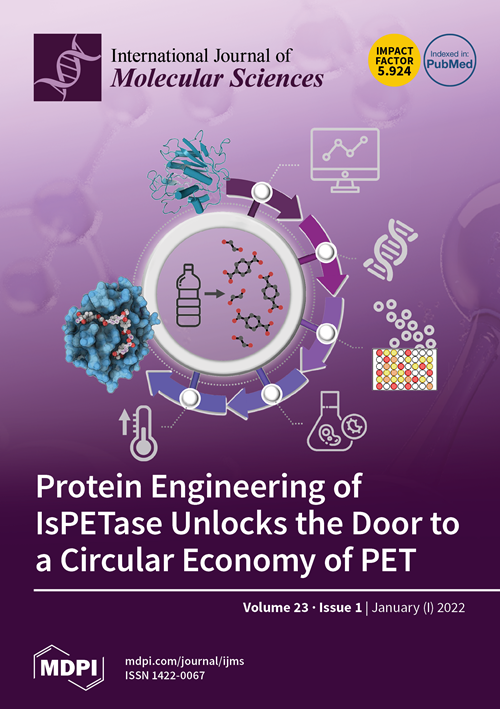Metabolomic Insight into Implications of Induction Chemotherapy Followed by Concomitant Chemoradiotherapy in Locally Advanced Head and Neck Cancer
IF 4.9
2区 生物学
Q1 BIOCHEMISTRY & MOLECULAR BIOLOGY
引用次数: 0
Abstract
The present study compares two groups of locally advanced patients with head and neck squamous cell carcinoma (LA-HNSCC) undergoing concurrent chemoradiotherapy (cCHRT), specifically those for whom it is a first-line treatment and those who have previously received induction chemotherapy (iCHT). The crucial question is whether iCHT is a serious burden during subsequent treatment for LA-HNSCC and how iCHT affects the tolerance to cCHRT. Of the 107 LA-HNSCC patients, 54 received cisplatin-based iCHT prior to cCHRT. The patients were clinically monitored at weekly intervals from the day before until the completion of the cCHRT. The 843 blood samples were collected and divided into two aliquots: for laboratory blood tests and for nuclear magnetic resonance (NMR) spectroscopy (a Bruker 400 MHz spectrometer). The NMR metabolites and the clinical parameters from the laboratory blood tests were analyzed using orthogonal partial least squares analysis (OPLS) and the Mann–Whitney U test (MWU). After iCHT, the patients begin cCHRT with significantly (MWU p-value < 0.05) elevated blood serum lipids, betaine, glycine, phosphocholine, and reticulocyte count, as well as significantly lowered NMR inflammatory markers, serine, hematocrit, neutrophile, monocyte, red blood cells, hemoglobin, and CRP. During cCHRT, a significant increase in albumin and psychological distress was observed, as well as a significant decrease in platelet, N-acetyl-cysteine, tyrosine, and phenylalanine, in patients who received iCHT. Importantly, all clinical symptoms (except the decreased platelets) and most metabolic alterations (except for betaine, serine, tyrosine, glucose, and phosphocholine) resolve until the completion of cCHRT. In conclusion, iCHT results in hematological toxicity, altered lipids, and one-carbon metabolism, as well as downregulated inflammation, as observed at the beginning and during cCHRT. However, these complications are temporary, and most of them resolve at the end of the treatment. This suggests that iCHT prior to cCHRT does not pose a significant burden and should be considered as a safe treatment option for LA-HNSCC.代谢组学揭示局部晚期头颈癌诱导化疗和同步放化疗的影响
本研究对两组接受同期化放疗(cCHRT)的局部晚期头颈部鳞状细胞癌(LA-HNSCC)患者进行了比较,特别是作为一线治疗的患者和之前接受过诱导化疗(iCHT)的患者。关键问题在于,iCHT 是否会对 LA-HNSCC 的后续治疗造成严重负担,以及 iCHT 如何影响对 cCHRT 的耐受性。在107名LA-HNSCC患者中,有54人在接受cCHRT治疗前接受了以顺铂为基础的iCHT治疗。从顺铂化疗前一天到顺铂化疗结束,每周对患者进行一次临床监测。采集的 843 份血液样本分为两份:一份用于血液化验,另一份用于核磁共振 (NMR) 光谱分析(布鲁克 400 MHz 光谱仪)。采用正交偏最小二乘法分析(OPLS)和曼-惠特尼 U 检验(MWU)对核磁共振代谢物和实验室血液检测的临床参数进行了分析。iCHT 后,患者在开始 cCHRT 时血清脂质、甜菜碱、甘氨酸、磷酸胆碱和网织红细胞计数显著升高(MWU p 值 < 0.05),NMR 炎症标志物、丝氨酸、血细胞比容、中性粒细胞、单核细胞、红细胞、血红蛋白和 CRP 显著降低。在 cCHRT 期间,观察到接受 iCHT 的患者白蛋白和心理压力明显增加,血小板、N-乙酰-半胱氨酸、酪氨酸和苯丙氨酸明显减少。重要的是,所有临床症状(血小板减少除外)和大多数代谢改变(甜菜碱、丝氨酸、酪氨酸、葡萄糖和磷酸胆碱除外)都会在 cCHRT 结束前消失。总之,iCHT 会导致血液毒性、血脂和一碳代谢改变以及炎症下调,正如在 cCHRT 开始和进行期间所观察到的那样。不过,这些并发症都是暂时的,大多数都会在治疗结束后消失。这表明,在 cCHRT 之前进行 iCHT 不会造成重大负担,应被视为 LA-HNSCC 的一种安全治疗方案。
本文章由计算机程序翻译,如有差异,请以英文原文为准。
求助全文
约1分钟内获得全文
求助全文
来源期刊

International Journal of Molecular Sciences
Chemistry-Organic Chemistry
CiteScore
8.10
自引率
10.70%
发文量
13472
审稿时长
17.49 days
期刊介绍:
The International Journal of Molecular Sciences (ISSN 1422-0067) provides an advanced forum for chemistry, molecular physics (chemical physics and physical chemistry) and molecular biology. It publishes research articles, reviews, communications and short notes. Our aim is to encourage scientists to publish their theoretical and experimental results in as much detail as possible. Therefore, there is no restriction on the length of the papers or the number of electronics supplementary files. For articles with computational results, the full experimental details must be provided so that the results can be reproduced. Electronic files regarding the full details of the calculation and experimental procedure, if unable to be published in a normal way, can be deposited as supplementary material (including animated pictures, videos, interactive Excel sheets, software executables and others).
 求助内容:
求助内容: 应助结果提醒方式:
应助结果提醒方式:


